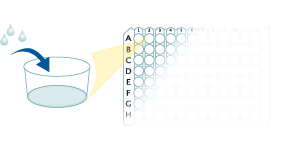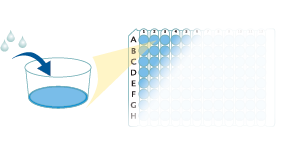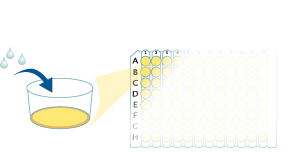 全部商品分类
全部商品分类



 下载产品说明书
下载产品说明书 下载SDS
下载SDS 用小程序,查商品更便捷
用小程序,查商品更便捷


 收藏
收藏
 对比
对比 咨询
咨询Product Summary
Sample Values
Serum/Plasma - Samples from apparently healthy volunteers were evaluated for the presence of human free BDNF in this assay. No medical histories were available for the donors used in this study.| Sample Type | Mean of Detectable (pg/mL) | % Detectable | Range (pg/mL) |
| Serum* (n=33) | 27,793 | 100 | 6186-42,580 |
| Platelet-poor EDTA plasma (n=33) | 428 | 56 | ND-4137 |
| Platelet-poor heparin plasma (n=33) | 196 | 55 | ND-528 |
| Platelet-poor citrate plasma (n=33) | 401 | 94 | ND-1838 |
| Condition | Day 1 (pg/mL) | Day 5 (pg/mL) |
| Unstimulated | 132 | 109 |
| Stimulated | 160 | 104 |
Recovery
The recovery of BDNF spiked to three different levels throughout the range of the assay in various matrices was evaluated.
| Sample Type | Average % Recovery | Range % |
|---|---|---|
| Cell Culture Media (n=5) | 96 | 83-105 |
| Platelet-poor Citrate Plasma (n=5) | 99 | 87-120 |
| Platelet-poor EDTA Plasma (n=5) | 96 | 89-115 |
| Platelet-poor Heparin Plasma (n=5) | 93 | 81-119 |
| Serum (n=5) | 100 | 85-116 |
Linearity
Scientific Data
Assay Procedure
Refer to the product- Prepare all reagents, standard dilutions, and samples as directed in the product insert.
- Remove excess microplate strips from the plate frame, return them to the foil pouch containing the desiccant pack, and reseal.
- Add 100 µL of Assay Diluent to each well.
- Add 50 µL of Standard, control, or sample to each well. Cover with a plate sealer, and incubate at room temperature for 2 hours.
Go to the next step. Do not wash. - Add 100 µL of Conjugate to each well. Cover with a new plate sealer, and incubate at room temperature for 1 hour.
- Aspirate each well and wash, repeating the process twice for a total of 3 washes.
- Add 200 µL Substrate Solution to each well. Incubate at room temperature for 30 minutes. PROTECT FROM LIGHT.
- Add 50 µL of Stop Solution to each well. Read at 450 nm within 30 minutes. Set wavelength correction to 540 nm or 570 nm.





Human Free BDNF Quantikine ELISA Kit Summary

Background: BDNF
BDNF (Brain-Derived Neurotrophic Factor) is a secreted protein that regulates many aspects of neuronal development and function in the nervous system. It is produced as proBDNF in response to neuronal activity or inflammatory stimulation and is then cleaved before associating into a homodimer. It is expressed throughout the nervous system as well as by fibroblasts, megakaryocytes/platelets, and smooth muscle cells. BDNF regulates neural stem cell survival and differentiation, axon/dendrite differentiation, synapse formation and maturation, and refinement of developing circuits. It is also a key regulator of synaptic plasticity and late-phase long-term potentiation. BDNF signals through the TrkB and NGF R/TNFRSF16 receptors. Secreted proBDNF can bind to NGF R/TNFRSF16 and induce long-term depression and cell apoptosis.








